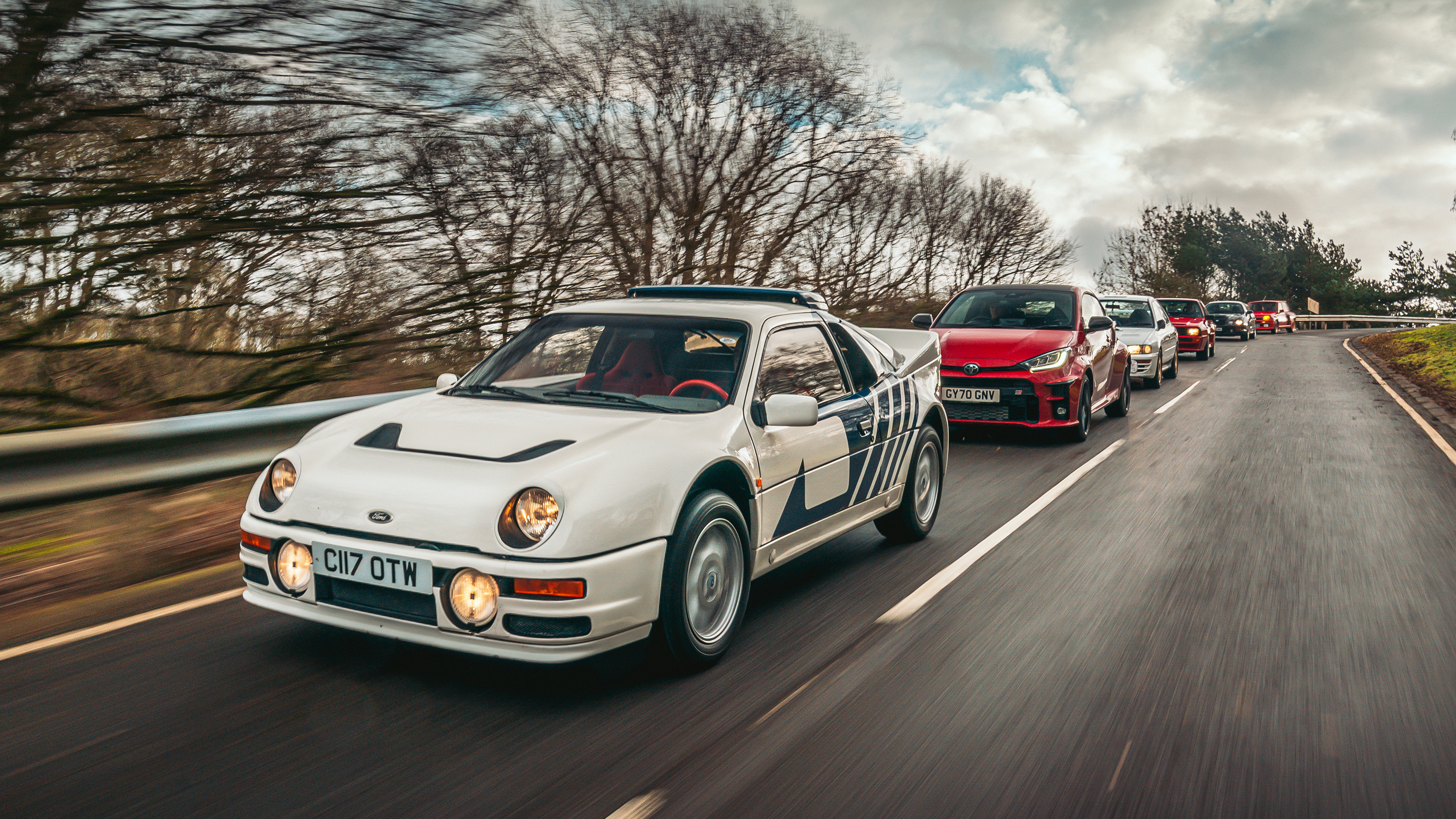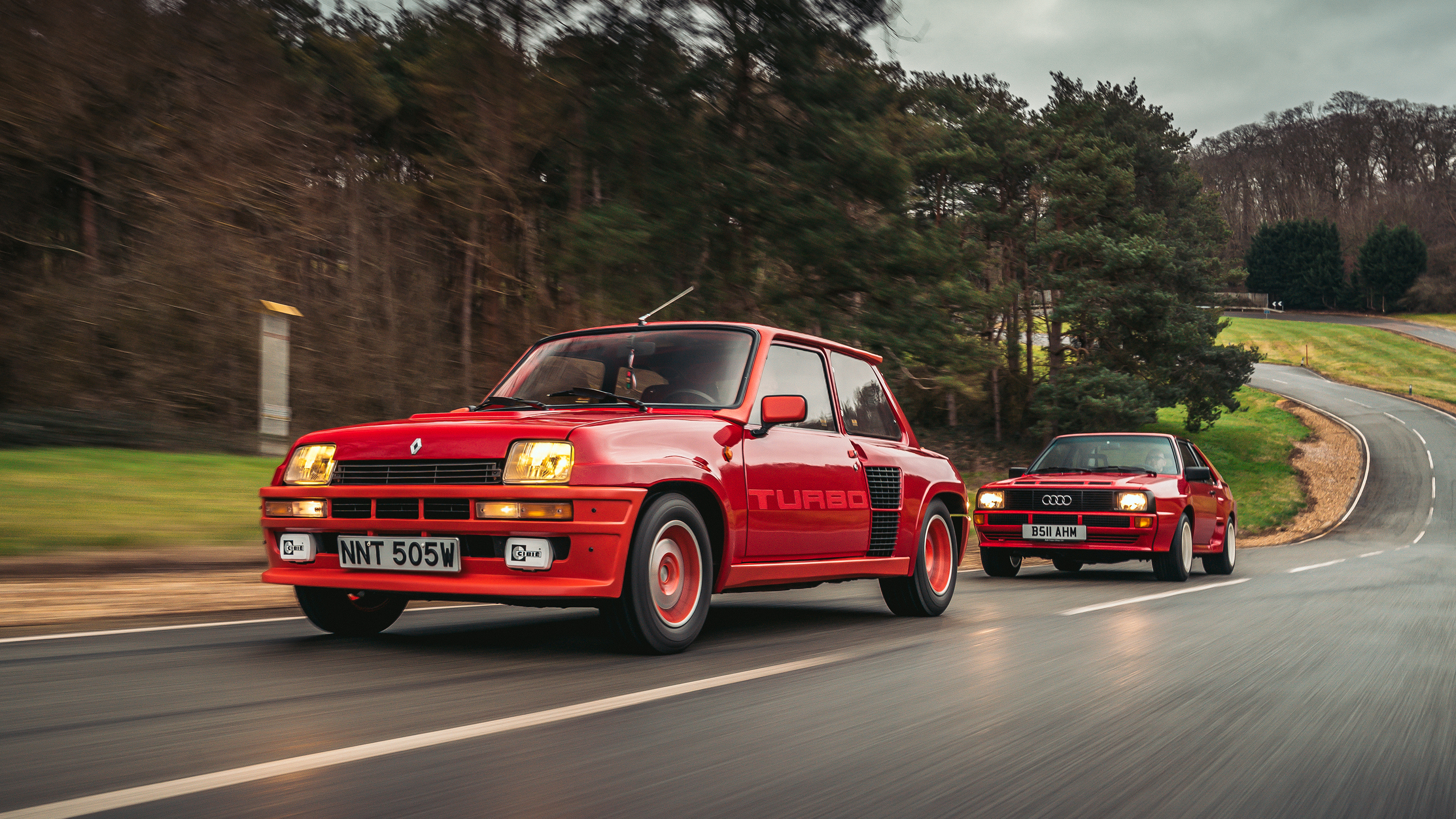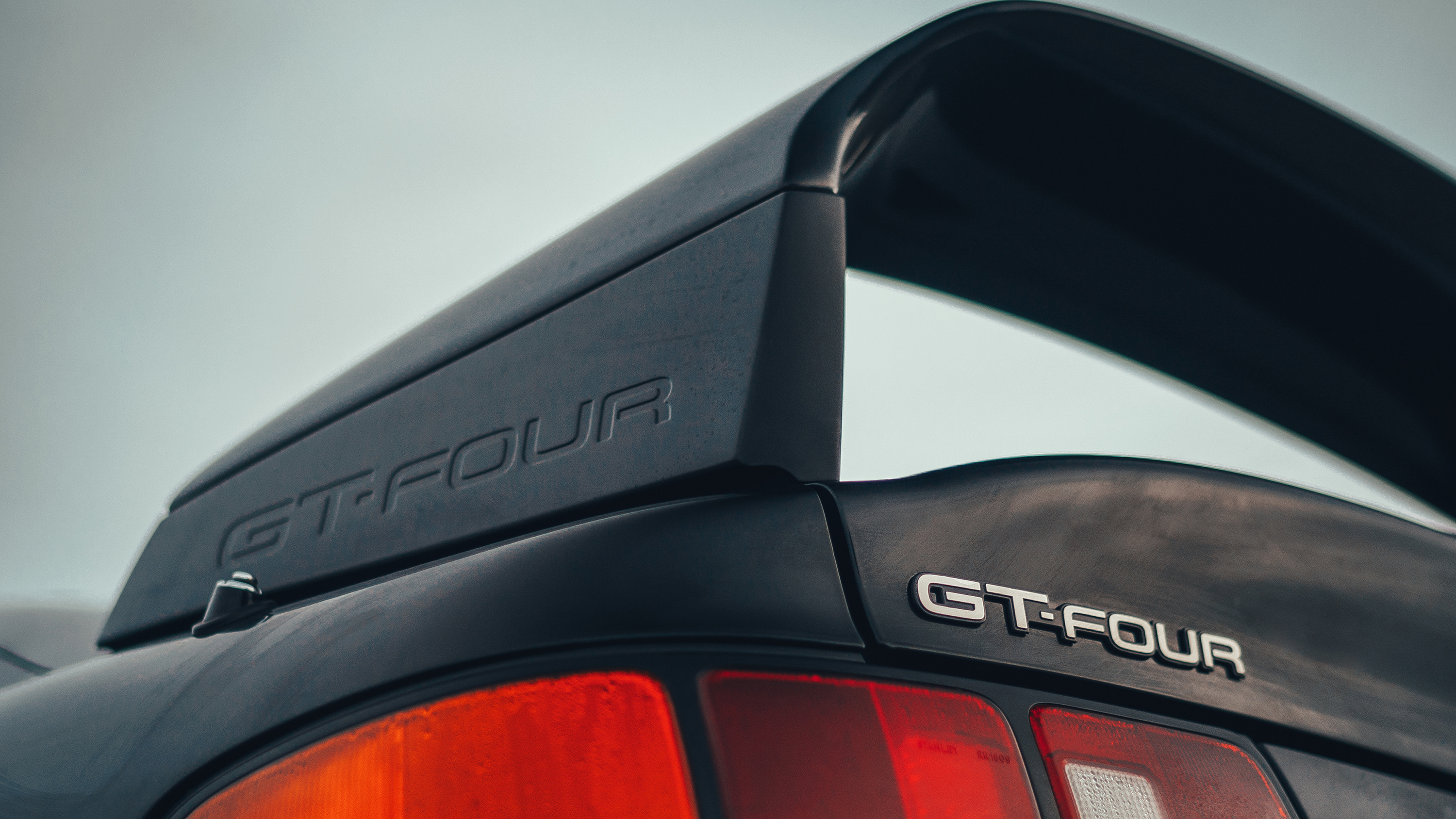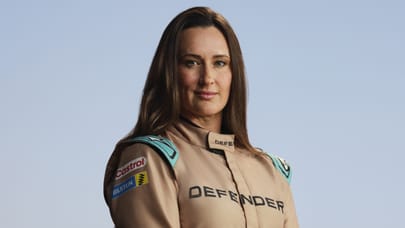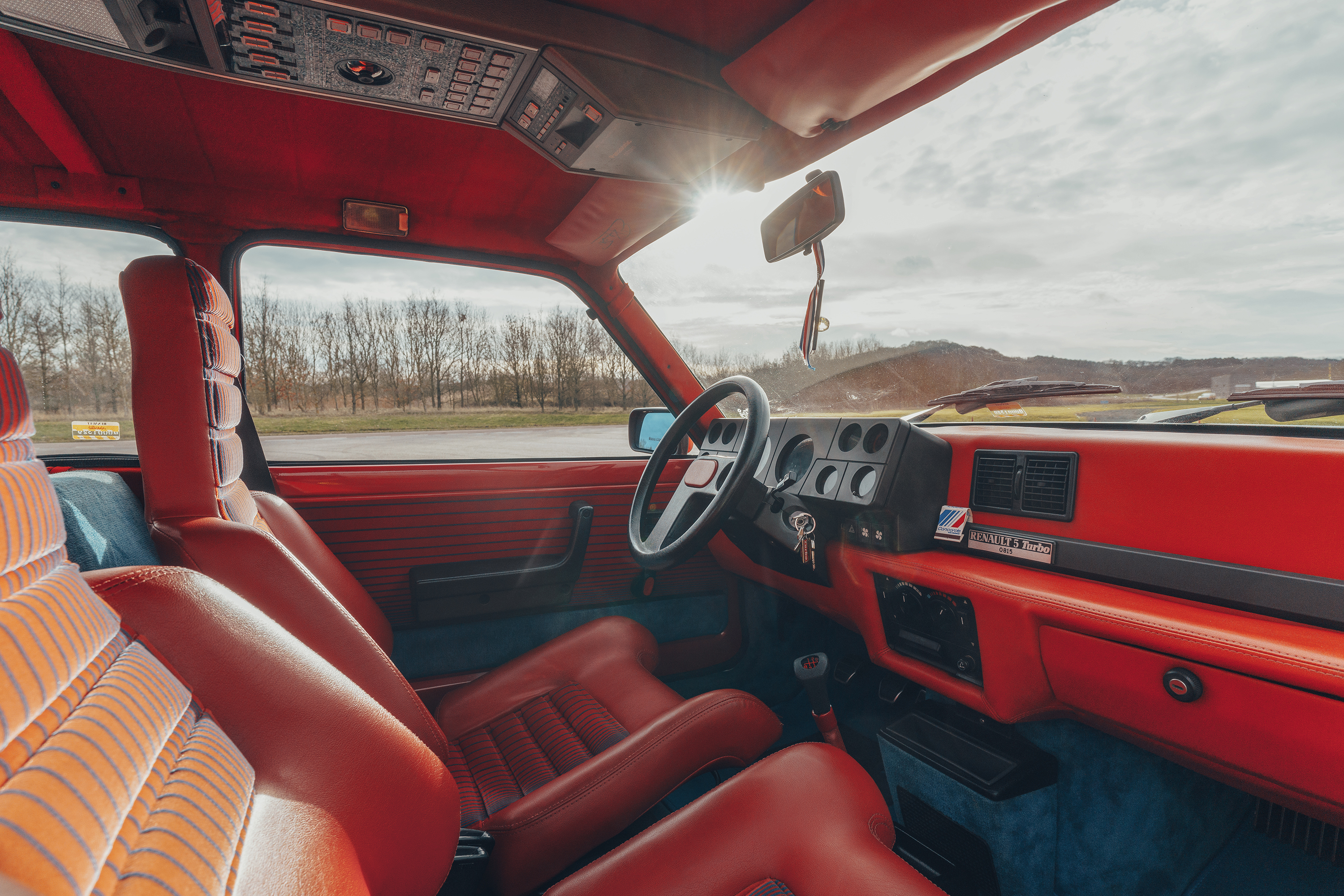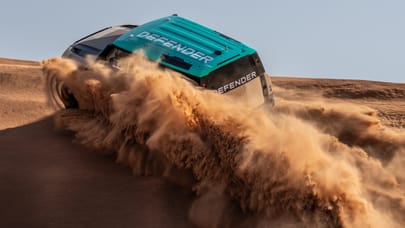
Group therapy: Toyota GR Yaris vs the rally icons
Does the GR really have the measure of an RS200, Sport Quattro, 5 Turbo and Impreza?
Homologation. Stupid word. Responsible for some of the most exciting cars ever to have turned a wheel, and yet ‘homologation’. You can’t abbreviate it (go on, try), you can’t make it sound sexy or cool (again, have a go. Maybe attempt a French accent) and it’s bloody hard to even describe to people what it is. Don’t try. Seriously, just say ‘road racer’ or ‘rally replica’ and move on, change the subject. Do not get into what I’m about to go into. That way lies nothing but social pariahdom.
Let me be your guide. And, to compound your pain, I’m going to start with a lesson. I know, back to school time, although here the three Rs are Racing, Road cars and Regulations. Now let’s do some ’rithmetic and write each at the corner of an equilateral triangle. Look, they’re in balance. Pull one corner away from the others and – argh! Isosceles. What I’m getting at with my terrifyingly loose grip on education is this: regulations exist to keep road and racing in balance. Let racing loose and costs spear upwards and – let’s introduce a fourth ‘R’ here – relevance declines.
In basic terms this is what happens: the regulators tell the firms that in order for them to compete in whatever class, they’ll need to build X number of road cars. Now, the race/rally cars can be further modified, but certain things won’t be able to be changed – the chassis, engine block, bodyshell, suspension pick-up points maybe.
It varies. This reassures manufacturers that the playing field is level, it stops costs spiralling and it helps us legitimately associate Colin’s Impreza with the one in the dealership. And makes us want one very badly indeed. Everyone’s a winner.
And from the early Seventies to the late Nineties, this is how rally car homologation worked. Why rally cars specifically? Because of how well they translate to road use. I know that seems odd given they’re designed to tackle mud, snow and gravel (and maybe says something about the state of British roads), but actually the elements that make a good rally car, from field of view to compact size to supple suspension, chime perfectly with what works well on the kinds of roads we love to drive on. Looked at this way, rally homologation cars are the ultimate road cars.
So what we have here is a lineage, an arc of cars that span the period. It’s by no means comprehensive – there’s no Mitsubishi Lancer, Peugeot 205 T16, Metro 6R4, not even a Lancia Delta Integrale, the era’s most successful rally car, which won six championships in the late Eighties and early Nineties. Apologies. COVID-19 makes things tricky.
What of Toyota’s latest project? Homologation car or not? Yes, absolutely
But look at what we do have: an original mid-engined Renault 5 Turbo, a car that would inspire the Group B monsters that followed. And from that era, Audi’s short wheelbase Sport quattro and Ford’s fearsome fresh-sheet-of-paper RS200. From the Group A regs that replaced them we have the Subaru Impreza WRX STi Type RA, a car whose name is one long rally acronym (World Rally eXperimental, Type Rally Application) and the Toyota Celica GT-Four WRC, the forerunner of the GR Yaris.
And what of Toyota’s latest project? Homologation car or not? Yes, absolutely, the first type approved rally special we’ve seen for over 20 years. Why so long? Well back in 1997, the FIA changed the regulations to make the WRC attractive to more marques. The road/rally car synergy was abandoned for a more silhouette-based approach – it had to be based on an everyday mass market model, but that was about it.
So Ford, Skoda, Citroen, Hyundai and VW piled in with their standard superminis and the nearest we got to a homologation special was when Peugeot wanted to compete with the 206, but it was 17cm too short to meet the four metre minimum. Solution: fit fat bumpers to a regular GTi, call it the GT and shift 2,500 of them pronto to legitimise it.
Top Gear
Newsletter
Thank you for subscribing to our newsletter. Look out for your regular round-up of news, reviews and offers in your inbox.
Get all the latest news, reviews and exclusives, direct to your inbox.
But building a different bodyshell entirely? Next level stuff. And that’s what sets the GR Yaris apart – not the world’s most powerful production three-cylinder turbo, nor the 4WD system (claimed to be the lightest on the market). None of that will be used on the WRC version, where the technical package is tight and prescriptive. That means gaining any advantage is difficult, so aero has become a key battleground. What you really want is a dipping roofline that doesn’t block air getting to the rear wing, and no rear doors as if you have them you’re not allowed to fit aero aids to them.
But who wants a supermini with no rear doors or headroom? Especially when, to qualify for WRC, you’ll have to shift 25,000 of them. No one, that’s who. Unless you do the job properly and make it so much of a tiny tearaway that people really won’t give a hoot about practicality. Given that no one has done anything like it for decades, it’s a definite leap into the unknown.
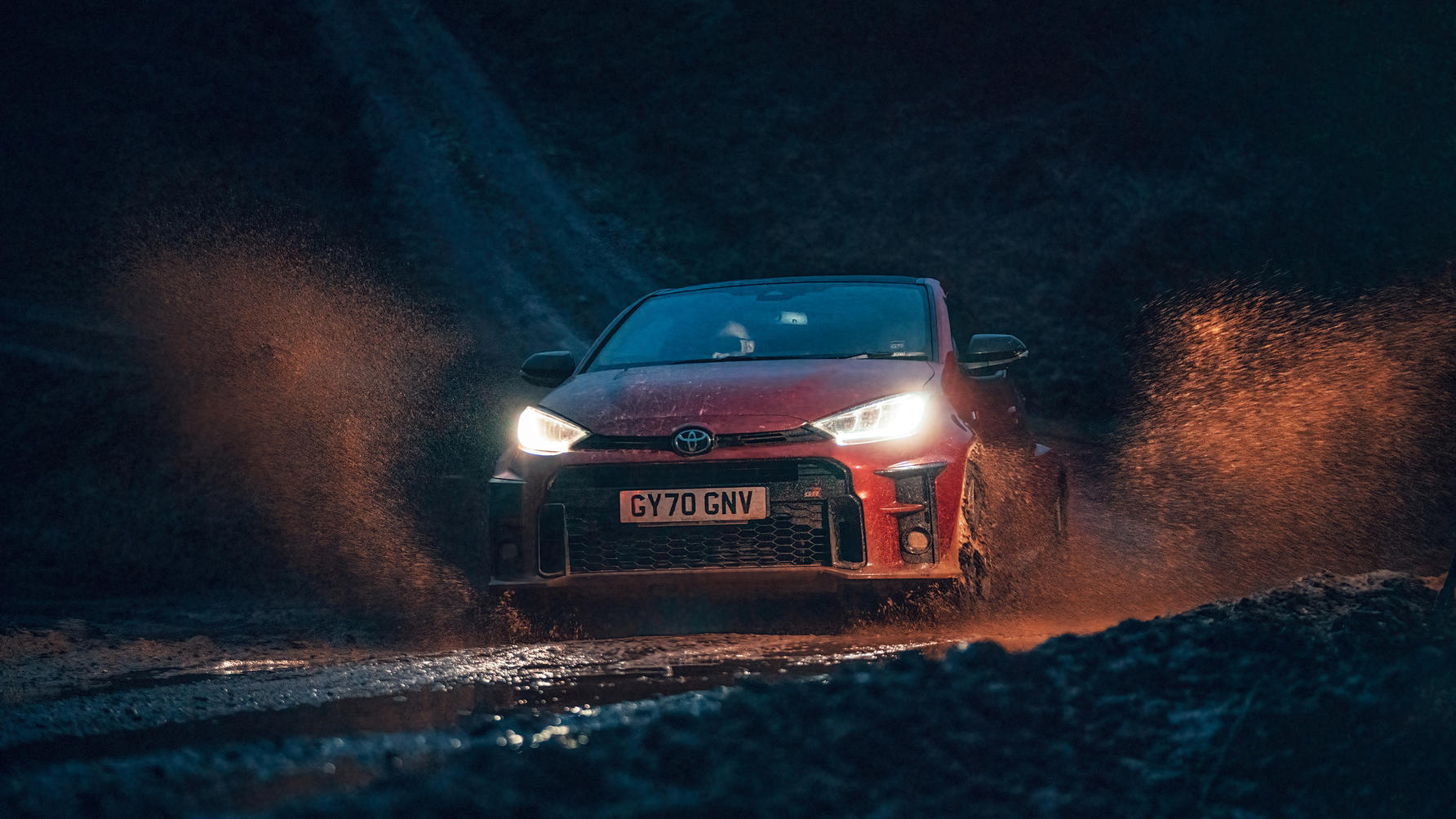
It was due to race this year, but then COVID-19 stepped in and the regulation change was pushed back to 2022, when WRC also goes hybrid. Will the GR Yaris ever grace a WRC stage? Let’s hope so. But in the meantime, let’s celebrate a car with genuine rally pedigree. Other 4WD turbo hotshoes, from the mk3 Focus RS to Merc’s A45 AMG, suggest they have, but to drive them is to know the truth: they’re pretenders. A homologation special needs to be more individual, to have a sense it’s been created at the behest of rally regs first, road use second. The Yaris manages that, just. Not only in its roofline, but also in the torquey eagerness of its power delivery, the turn-in grip and traction. It’s a compelling little thing because it has flaws. Although I hardly think short gearing, a bit of road noise and stiff springs are detrimental. It’s refreshing because it’s not trying to cover all the bases.
Around Millbrook’s hill route it’s a crackerjack. You sit much higher than in any of the old cars, but that’s the way rallying has gone; driver high for visibility, co-driver low for centre of gravity. It also shows how far things have come. It’s the fastest car here. Bet you weren’t expecting that. But none of the others, not even the 306bhp Audi, are as rapid. It would be a fascinating drag race which I reckon the Yaris, Impreza and Sport quattro would duke out, but throw in some corners and the Yaris walks away from them. Modern tyres and brakes obviously make a huge difference, but what the Yaris mainly shows is how far turbos and 4WD systems have developed. Boy, were they crude back in the day.
Just look at the turbo plumbing of the Ford RS200. The 2.1-litre’s blower sits well outside the engine on the offside. Air comes in, is pressurised by the turbo, then goes up across the roof where it passes through the intercooler, then back down into the engine. No wonder there’s lag. No wonder that even once you’re through that the engine hardly delivers a hammer blow of power. It sort of huffs along, its sweet spot (like the Audi’s) from 5,000–7,000rpm. But then this wasn’t a race engine. Oh no. And to tell you more about that, we need a history lesson.
You see the grandaddy of all these cars is the Lancia Stratos. When that appeared in 1974, it was the first purpose designed homologated rally car. There were 500 built to satisfy Group 5 regs and it won the manufacturers' championship three years on the bounce. No wonder everyone else wanted in on the action. Especially Renault, seeing as the Alpine A110 had been a rallying front runner before Lancia turned up.
So the French set to work on the little 5 supermini. With some Italian assistance: design house Bertone was engaged to help out and suggested putting the engine in the middle driving the rear wheels. Just like the Stratos. Which, funnily enough, it’d also had a hand in. Instead of a Ferrari-sourced Dino V6, Renault, an early adopter of turbocharging, took the sportiest 5’s 93bhp 1.4-litre and boosted it to 158bhp for the road car.
It needed to sell 400, which didn’t prove to be an issue. In fact this mid-engined hot hatch ended up such a hit, that Renault would build 1,820 of them. Then it did a cheaper Turbo 2 that did away with some of the more specialised components – and the outrageous cabin.
I had no idea about this. I guess it’s what happens when it’s the late Seventies and you employ Bertone and say you only need a handful built. You get a concept car. There was nothing in the regs that said you had to have an interior as louche and artful as a Riviera nightclub, but here it is anyway, complete with (admittedly aftermarket) roof-mounted stereo and asymmetric two-spoke steering wheel. It’s surprisingly comfortable to hold. The seats? They’re like that because the fuel tank is underneath.
What a thing to drive though. I was convinced it was going to be terrifying, a spiky, vindictive turbo mated to an all too brief chassis with the weight distribution of a pendulum. I couldn’t be more wrong. It’s a joy. There's less lag and better spread of power than either the Audi or RS200 that came along over four years later and handling that is smooth, compliant and way better balanced than I’d anticipated. Good though it is, it doesn’t seem a natural rally car – not given what followed.
The weird thing is that no one thought 4WD would work. This might have something to do with rallying being dominated at the time by the Italians and French, who were more tarmac focused. Certainly no one was worried about the arrival of a big, heavy Audi that was powered by a five-cylinder turbo engine mounted so far forward it was basically a battering ram. Oops. In a move broadly unnoticed (and rumoured to have been at Audi’s behest), FISA (forerunner to the FIA) changed the regulations in 1979 to permit four-wheel drive. The next year Audi sent a development car in the hands of Hannu Mikkola to the Algarve rally in Portugal to act as a course car. Had it been competing it would have won by 26 minutes.
This was a car, don’t forget, that hadn’t been designed – or even much modified – for competition. But Audi wasted no time capitalising on its advantage. The quattro took three wins in its 1981 debut season and won the championship the following year. But in its success was the seed of its own downfall.
In 1983 FISA introduced the infamous Group B category. It was done in the hope of adding glamour and excitement to rallying, by encouraging firms to follow in the footsteps of the Stratos and build something unique. And this time, rather than having to build 500 cars, you would only have to build 200. Plus, with Renault having proved the benefits of small capacity turbo engines (by 1984, using its forced induction experience from F1, the 1.4 was producing 345bhp) and Audi having demonstrated 4WD’s strengths, the template for speed was clear.
And the rules were very open. It had to have a closed cockpit with two seats side by side. That was about it. Minimum weight and tyre widths were governed by your engine displacement. Got a turbo? Your engine capacity was multiplied by 1.4, so Renault’s 1.4 was classified a 2.0, etc. Naturally everyone came up with the same thing: turbocharged and 4WD in a compact, mid-engined body. And then made full use of a sub-clause that said once you’d built 200 road cars, 20 ‘evolution’ cars could be built each year provided the basic template didn’t change. Wings sprouted, turbos expanded like over-jammed donuts (because turbo size didn’t affect the engine/weight calculation) and in the space of three years power outputs went from 250bhp to over 500bhp. The cars still weighed around 900-950kg. Speed? Yep, they had that alright.
This left Audi with a problem. It had invested too much to abandon the quattro, yet the far forward engine meant it was neither nimble nor well balanced. So in 1983 it launched the Sport quattro – 320mm had been cut out of the wheelbase, the front track width was up 95mm, bodywork was mostly formed out of Kevlar and fibreglass, and the engine block was alloy rather than iron, shedding 23kg.
As a road car this 306bhp coupe was vastly over-engineered. And surprisingly civilised. This is not the animal you may have been led to believe. Inside there’s leather, chrome and ‘design’ and the only sporting feature is what looks like a choke knob – that’s the diff lock control. The engine is calm and good natured, has a healthier mid-range than the Ford and a punchier top end, too. A 0–60mph time of 4.8secs meant it was one of the very fastest cars on sale 35 years ago. Today, it’s hot hatch pace. Just with way more natural charisma.
Its chassis and steering aren’t aggressive, the front wheels seem a long way ahead and the rears basically under your arse. Nimble? Nah, still quite nose-led, but once the front has grip, it doesn’t easily relinquish it – you just need to keep the power on. The engine warbles pleasingly, the turbo hisses gently, you can make good progress. But the best thing about it is the way it looks. It may not have been very successful, and it’s physically tiny these days, but no wonder this is the car people think of when Group B is mentioned.
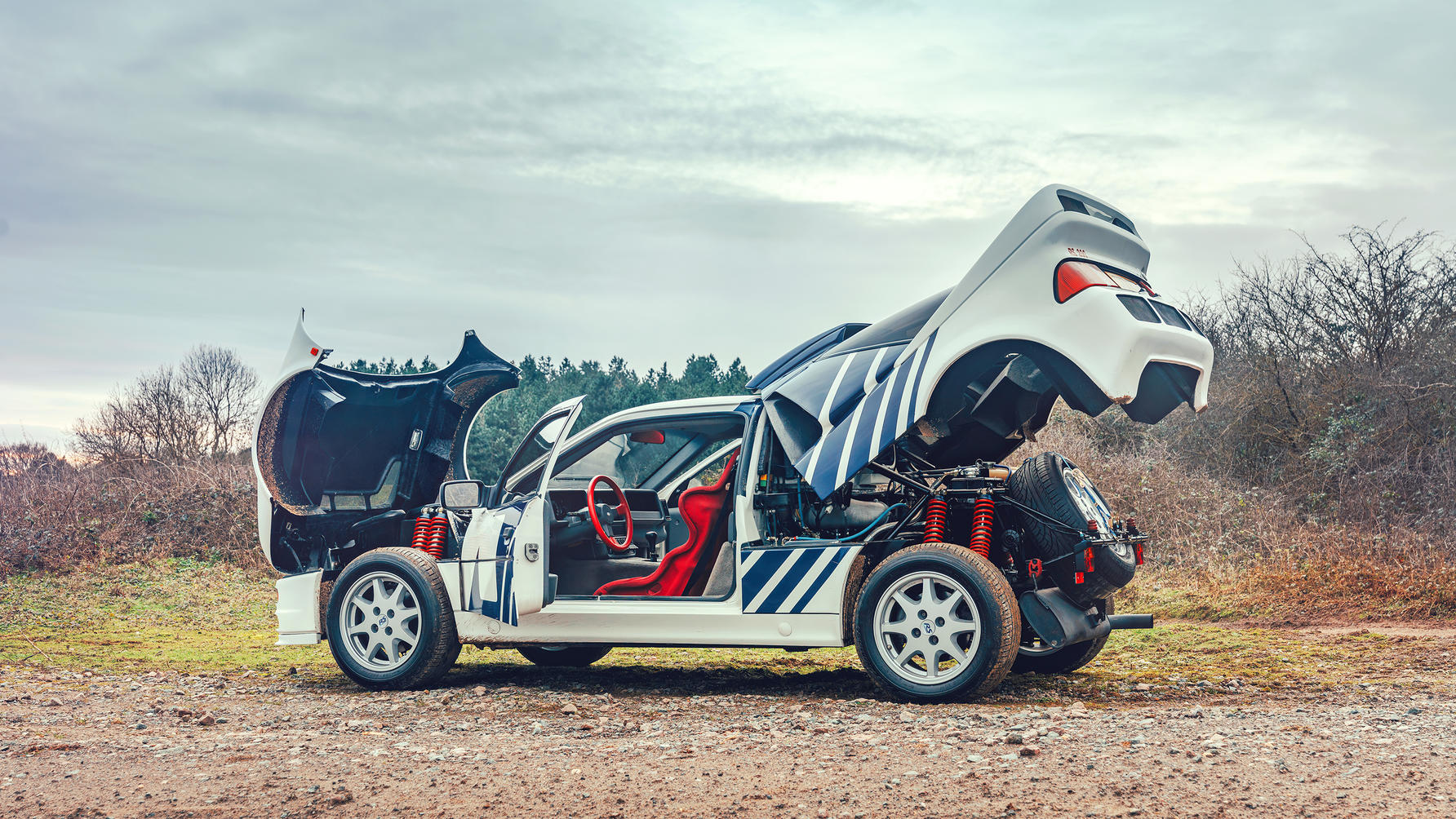
Compare and contrast with the froggy, unfinished RS200. A road car in name only, it’s clanky, cramped and ramshackle. The footwell is tiny, rough carpet covers bare metal and just look at the panel fit – the bonnet overlaps the A-pillars by an inch. It was built by Reliant due to its fibreglass expertise, which might explain a few things. People who bought them must have wondered what they’d got themselves into. It may have a lightweight space-frame chassis and twin dampers at each corner, but the car feels loose and edgy when you back off and it’s only when you have pressure in the diffs that it comes together. Overall there’s a sense the RS200 never received the development that was owed to it. Welcome to Group B – it placed so much emphasis on racing that the road cars could be forgotten about.
It didn’t help that Ford had to change tack at the last minute. It’d been planning a development of the Escort before Group B came along, so was on the back foot when others, especially Peugeot with its 205 T16, hit the ground running. It wasn’t until 1986 that the RS200 was good to go. It promised much. Designed by two F1 engineers, it was low, light, mid-engined and, with the gearbox at the front, seemed the best-balanced Group B car of all. It never got much of a chance to show what it was capable of. A third place on Rally Sweden in February 1986 was its best result.
The following round, Portugal, was to be the beginning of the end for Group B. An RS200 driven by Joaquim Santos left the road and went into a crowd, killing three and injuring 30. Two months later, rising star Henri Toivonen crashed on the Tour de Corse, his Lancia Delta S4 tumbling into a ravine and bursting into flames on impact. Both he and his co-driver, Sergio Cresto, were killed.
And that was the end. Audi and Ford withdrew immediately, the class itself died at the end of the year. The monsters had an afterlife: Metro 6R4s and RS200s began popping up on the rallycross circuit, Peugeot took the 205 technology to the Paris-Dakar event, Audi did the same with Pikes Peak. But rallying itself was changed.
What happened next was partially farcical. Behind the scenes firms had complained Group B was too expensive – the road cars had been costly to develop and build, then hard to sell (hardly surprising given the crudity of some and rumours abounded of £45,000 6R4s being flogged off for £15,000). Instead, a prototype class, Group S, was in the works: specialist rally cars, doing away with homologation completely, but made slower with restrictors limiting power to around 300bhp. Arguments wrangled back and forth, but in the end the top tier was just chopped away, and the next class down, Group A, came to the fore.
Bar Lancia, most European marques withdrew and up to the plate stepped the Japanese. It would take Subaru and Mitsubishi a few years to catch on, but in the meantime Mazda, and more pertinently, Toyota, got serious about rallying. Group A regs dictated that 5,000 road cars had to be built (reduced to 2,500 in 1993) and mods were restricted. Unable to resort to power for speed, engineers focused on the chassis. Within three years the cars were faster through stages than the Group B machines. Yes, really.
The Celica's steering is gorgeous, the whole car eager, together and crisp to drive
Three generations of Celica competed, the ST165, 185 and 205. Here we have the latter, in full house WRC trim. It arrived in 1994, trying to recapture past glories. In the hands of such stellar talents as Juha Kankkunen and Carlos Sainz its predecessor had won four driver titles and two manufacturer titles across 1990–1994. Toyota threw the kitchen sink at this last-of-the-line version: water spray for the intercooler, taller rear wing spars, twin-scroll turbo, ‘Super Strut’ suspension and anti-lag plumbing. As far as rallying goes, it only gave it a year. But as a road car this is something of an unsung hero.
Even by quarter-of-a-century-newer GR Yaris standards there’s not much turbo lag, the steering is gorgeous, the whole car eager, together and crisp to drive. After the slight disappointment of the Group B era road cars, which are rich in experience and drama (less so in proficiency), things are getting together. Group A regs, which forced firms to think creatively and in detail about what could be done, worked better as a development strategy for road cars.
And no one worked the detail as much as Subaru. It had got into national rallying in the Eighties, but it wasn’t until the arrival of the Impreza in 1992 that things gathered momentum. I’m going to simplify the ludicrous complexity of the annually updated models that followed. WRX was the ‘everyday’ version, initially powered by a 208bhp flat-four turbo. STi variants (which followed in 1994) focused on performance enhancements.
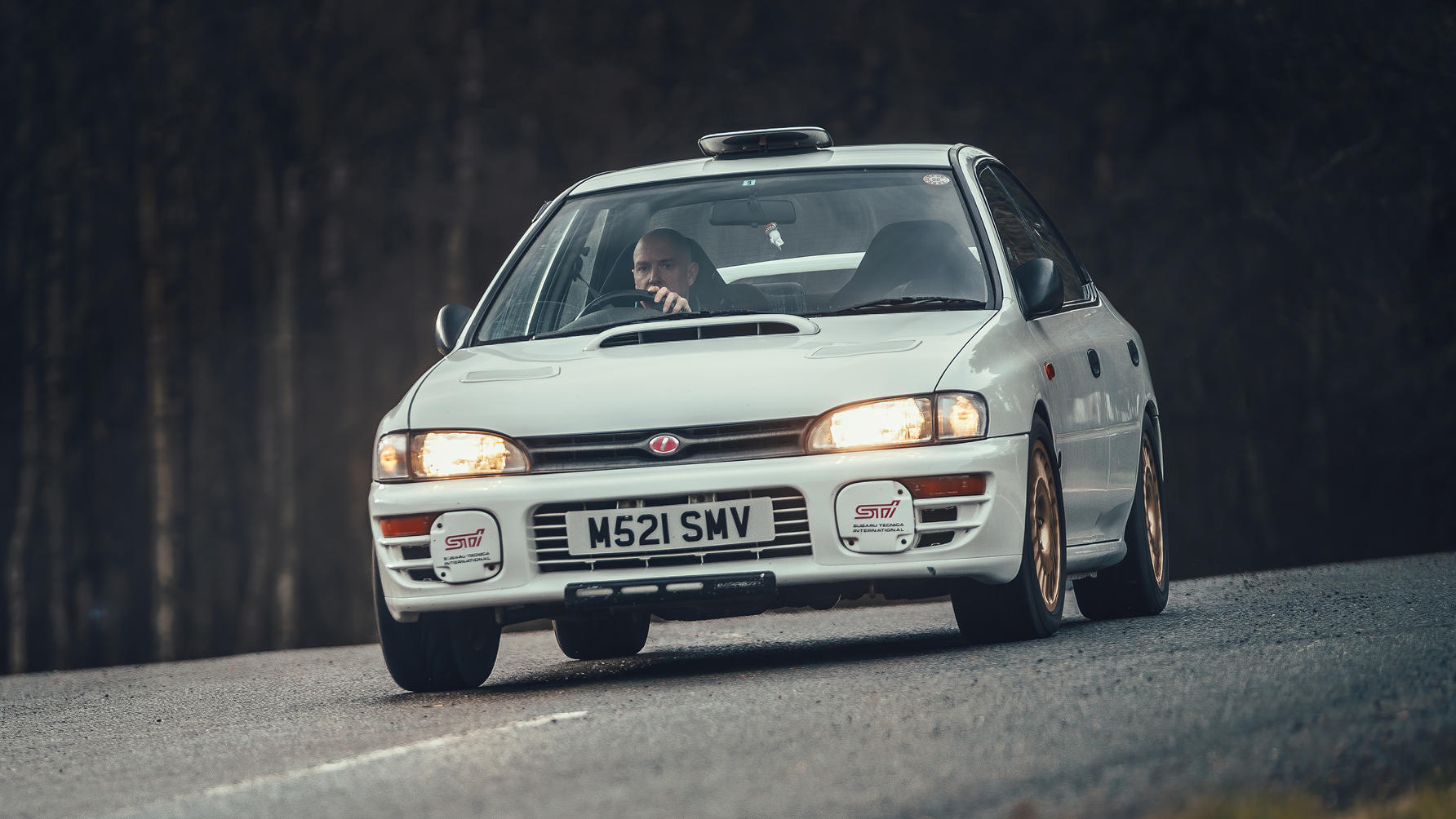
The Type RA designation was rally specific and mainly about weight loss. It wasn’t needed for WRC homologation, but it was ideal for lower-tier rallying. Air con and sound deadening were junked, window winders made a comeback, there was no ABS and the gearbox had a shorter final drive. It is perhaps the most rally-ready production car any firm has ever built.
And that’s what it feels like as soon as you get moving in it. Light, small and supple. It moves easily over the ground despite taut aftermarket suspension. That’s at odds with the steering, the big wheel initially feeling loose and inert in your hands. All part of the design – less kickback on rough surfaces when the wheel is straight. As soon as you get some lock on, everything tightens up and the Impreza immediately gains focus and intent. For breathless sprinting it’s awesome, the gear throw tight and short, the power band always there. And it’s not noisy. Not on its original pea-shooter pipes at least. Great seats and with the roof vent open, properly atmospheric. For a good time on a B-road, this is the one.
Only it isn’t, because I reckon the latest GR Yaris actually has the measure of them all. In one upright, nose heavy package it manages to cram enough guts and gumption to convince as a rally replica. It might not have the mechanical authenticity of those that went before and it lacks the characterful clanks, shunts and hissing lag. But then look at modern rally cars. They’re not crude. I don’t know how much Tommi Mäkinen and the rally team genuinely had to do with it, but that relationship feels real.
And what we like about all of these, what homologation has given us, is cars with purpose, meaning and clarity, cars with intricate engineering and competition pedigree. Normal cars, no matter how fast or exclusive, are the result of careful planning, marketing and strategy. How dull. These were forged in the heat of battle.
Without homologation Renault would never have put the engine in the back of a 5, Audi would never have chopped a foot out the middle of a quattro, the RS200 would never have been so much as a sketch on a drawing board, the Celica and Impreza would never have been more than moderately interesting, semi-sports cars. Rallying has given them all a story. Let’s hope that the GR Yaris gets to tell one of its own.
Photography: Mark Riccioni and Richard Pardon
Trending this week
- Car Review
BMW 1 Series
- Top Gear's Top 9
Nine dreadful bits of 'homeware' made by carmakers




